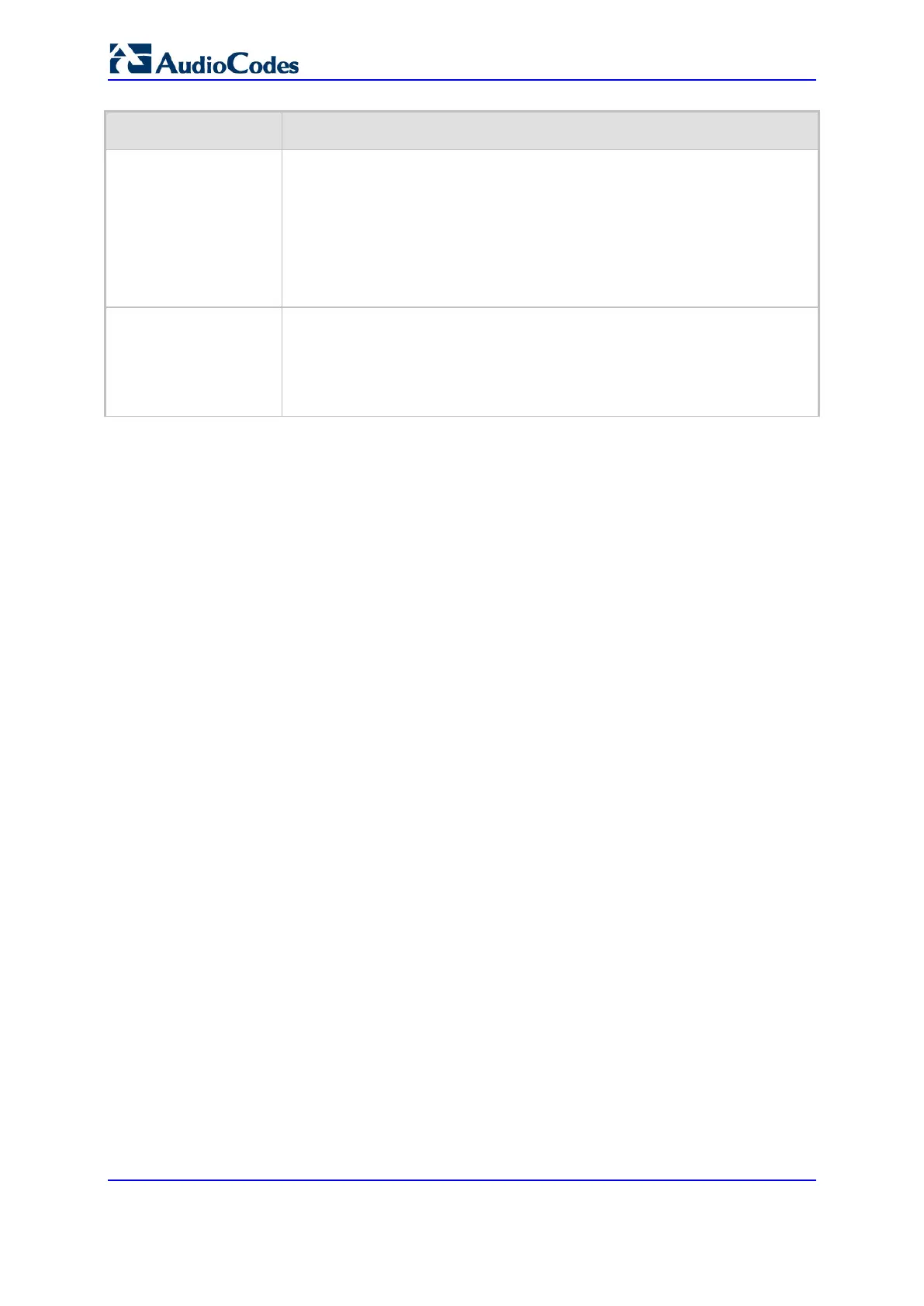User's Manual 326 Document #: LTRT-89730
Mediant 3000
Parameter Description
Port Range End
[MediaRealmExtension
_PortRangeEnd]
Defines the last (upper) port in the range of media UDP ports for the Media
Realm Extension.
Note: It is unnecessary to configure the parameter. The device
automatically populates the parameter with a value, calculated by the
summation of the 'Number of Media Session Legs' parameter (multiplied by
the port chunk size) and the 'Port Range Start' parameter. After you have
added the Media Realm Extension row to the table, the parameter is
displayed with the calculated value.
Number Of Media
Session Legs
[MediaRealmExtension
_MediaSessionLeg]
Defines the number of media sessions for the port range. For example, 100
ports correspond to 10 media sessions, since ports are allocated in chunks
of 10.
By default, no value is defined.
Note: The parameter is mandatory.
18.2 Configuring SRDs
The SRD table lets you configure up to 33 signaling routing domains (SRD) for Gateway
and SBC calls. The SRD is a logical representation of an entire SIP-based VoIP network
(Layer 5) consisting of groups of SIP users and servers. The SRD is associated with all the
configuration entities (e.g., SIP Interfaces and IP Groups) required for routing calls within
the network. Typically, only a single SRD is required (recommended) for most
deployments. Multiple SRDs are only required for multi-tenant deployments, where the
physical device is "split" into multiple logical devices. For more information on multi-tenant
architecture, see ''Multiple SRDs for Multi-tenant Deployments'' on page 332.
As the device is shipped with a default SRD ("DefaultSRD" at Index 0), if your deployment
requires only one SRD, you can use the default SRD instead of creating a new one. When
only one SRD is employed and you create other related configuration entities (e.g., SIP
Interfaces), the default SRD is automatically assigned to the new configuration entity.
Therefore, when employing a single-SRD configuration topology, there is no need to
handle SRD configuration (i.e., transparent).
SRDs are associated with the following configuration entities:
SIP Interface (mandatory) - see ''Configuring SIP Interfaces'' on page 337
IP Group (mandatory) - see ''Configuring IP Groups'' on page 343
Proxy Set (mandatory) - see ''Configuring Proxy Sets'' on page 355
Admission Control rule - see Configuring Admission Control Table on page 587
Classification rule - see Configuring Classification Rules on page 595
As mentioned previously, if you use only a single SRD, the device automatically assigns it
to the above-listed configuration entities.

